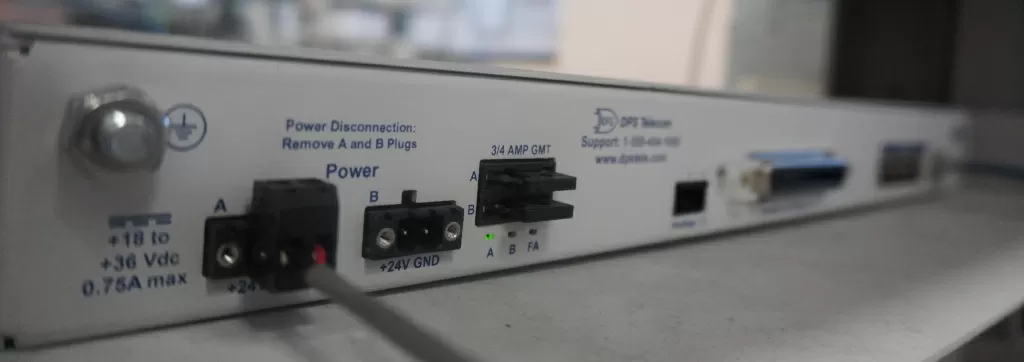Check out our White Paper Series!
A complete library of helpful advice and survival guides for every aspect of system monitoring and control.
1-800-693-0351
Have a specific question? Ask our team of expert engineers and get a specific answer!
Sign up for the next DPS Factory Training!

Whether you're new to our equipment or you've used it for years, DPS factory training is the best way to get more from your monitoring.
Reserve Your Seat TodayHere at DPS we offer many different build options on our units to meet our client's needs. We want to make your monitoring job as easy as possible, so we want to work with you to meet the unique needs of your company or organization.
One option that we provide on some of our units is "Ground Isolation." This option isolates the chassis and the grounding lug on the back of the unit from the GND input terminal. If your equipment does not have this option, it means that the lug, GND terminal, and chassis are electrically the same.
It is important to know what this option does, as improper connection of the grounding lug or placing the unit on an oppositely charged rack can cause a short which can damage the unit.
One afternoon we had a client call in with an issue regarding his NetGuardian 420. He could connect his power source from power A to his units and all was well, but as soon as he connected his power source B to the unit it would blow both fuses.
From then on, even when power B was disconnected it would blow the fuses. When we hear a unit has been blowing fuses, it usually means there was a power surge across the unit somewhere. After hearing his issue, I asked the client a few questions to get an idea of his setup and how it was all connected.

Fuses on the back of a NetGuardian 420
His setup consisted of a fuse panel and a 125 VDC supply that provided 48VDC through a DC transducer. The fuse panel provided voltage to both A and B inputs on the NetGuardian 420. The NetGuardian 420 had it's grounding lug connected to the GND terminal of the transducer.
I ran the setup by one of our electrical engineers, and we determined that the issue was most likely the lack of a ground isolation option. His equipment on the rack all required positive voltage, and the rack was polarized accordingly. When he powered the NetGuardian 420 on his rack, the circuit was completed which caused the higher voltages from his transducer to flow through the NetGuardian 420, blowing components and resistors inside.
We reached out to the client and informed him on what we had found. We let the client know about our RMA process, and he decided to take us up on the RMA to get his units repaired. We evaluated and analyzed the unit once we received it. We were able to find and replace the damaged components and get the unit shipped back to the client, and the unit worked just as well a brand new one.

DPS engineers looking for damaged components
Understanding what ground isolation does to your unit is important to prevent improper setup and damage to the unit. If you're unsure of your build options, give us a call. We'll be happy to go over what you currently have, and to see if there is something that will fit your needs better. Our goal is to make your lives easier, and we won't rest until we get you the perfect solution to meet your network monitoring needs.

Ryan Ridley
Ryan Ridley is an Electronics Test Technician at DPS Telecom. He has worked in tech support, engineering and manufacturing. He brings over 5 years of experience working with DPS hardware and software. At DPS Telecom, Ryan is responsible for performing testing on our products to verify they work ...